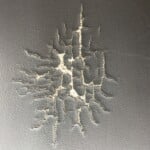Peeling or flaking is usually a sign of a delaminating bicast, bonded or faux leather and may be cost prohibitive to repair. Sometimes, however, peeling … Read more
Real leather does not peel nor flake. The only exception is if a leather’s urethane finish has been damaged. In this case, you’ll notice the … Read more
Let your finger tips decide if scuffs, scratches or cracks need repair. Only damage that can be felt needs fixing. Cuts, tears, burns or holes … Read more
The rule of thumb with leather scratch repair is to let your fingers be the judge. If you can feel the damage caused by your … Read more
Repairing cat scratches on vinyl or faux leather is painstaking work, and perfection is nearly impossible (unlike similar damage to real leather). The results are … Read more
Like a good bone, dogs can’t resist chewing on fine leather furniture. The damage wrought from Scooby’s snacking often results in a large hole — … Read more
Ask yourself, has the thread and stitching come undone? Or has the leather, vinyl or fabric torn along the seam, and the stitching remains intact? … Read more
Welting or piping, the cord trim on upholstery, can be a tricky repair due to the curves involved. The key is to avoid getting any … Read more
Tears in perforated leather or vinyl are a tricky repair. Each hole needs to be preserved or re-created in order to avoid a patched appearance. … Read more
As vinyl desiccates (dries out), it develops cracks that often have sharp edges that curl upward. These must be carefully shaved away or melted and … Read more









